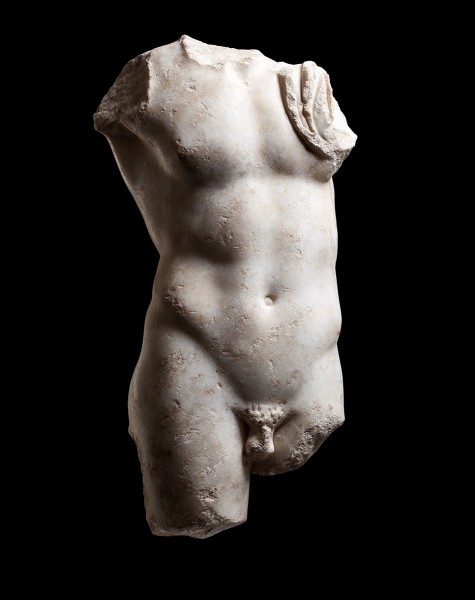
Andipa are delighted to have collaborated with White Cube in their latest exhibition by artist Danh Vo. Vo’s latest works continue his exploration of power structures and their influence on both personal and collective identity. Vo’s last exhibition at the gallery coincided with the final days of the 2020 US Presidential election, then regarded as the most consequential in history. It featured a monumental representation of the '13 colonies' flag, seen by many as an allegory for the tensions of the time. Now, against the backdrop of another such election, Vo’s found objects, oil paintings, bronzes, and other pieces possess a quieter quality, reflecting on how artistic labour finds ways to resist, adapt, and endure, irrespective of the political and social climate.

Vo incorporates Andipa’s ancient Roman Torso and repurposes the over 2,000 year old object amongst pinewood planks and fuses the sculpture with a Roman Apollo of Asklepius. The sprawling exhibition places object in both a familiar and distinct setting, inviting viewers to pass through the sprawling exhibition and seeks to question non-linear narratives as the modern, ancient and repurposed collide. Vo’s layers add value and allure, but who, one wonders, has consented to this transformation? For Vo, the tension between beauty, power, and intimacy is crucial.
Adopting a refined, contrapposto pose with his weight bearing down on his right leg, this exquisite torso probably belongs to a heroic athlete or warrior. A slightly twisted shoulder and softly modelled body highlight the subtly of the carver’s skill, while the pose suggests their deep-rooted knowledge of the principles of Classical art.
The model for such Roman marble sculptures often derived from now lost 5th and 6th century B.C. Greek originals, cast in bronze. By the time of this statue’s creation during the Imperial Period of ancient Rome, sometime between the 1st and 2nd century A.D., there was a vogue for all things Greek in both art and culture. The skill of ancient Greek sculptors was especially not lost on the Roman elite, and as D.E.E Kleiner explains "They were introduced by the Greeks to art… by the abundant display of plundered Greek masterworks in the Roman triumphal processions. After the supply of originals dwindled, whole schools of copyists began turning out near replicas and new variations to fulfil the demands of a seemingly insatiable Roman audience."

With a tunic draped over his left shoulder, possibly denoting a chiton (an ancient Greek form of clothing), this figure cuts a remarkable posture, typically associated with the Oil Pourer (c.340-330 B.C.), a now lost ancient Greek bronze sculpture associated with the artist Lysippos which is known through extant Roman copies. The male’s stance also suggests an air of quiet repose – essential to the cultivated mind working harmoniously with the cultivated body in ancient Rome.
Statues such as this most commonly survive in torso form (sometimes with 18th and 19th century spurious repairs and additions) due to weak points of the carving being situated where the limbs and head join the body. The roughness of the carving on the figures reverse suggests the sculptor has been economical with his work – perhaps a sign it was commissioned to stand within a niche and not viewed in the round.

Both the Metropolitan Museum in New York and the British Museum in London (which respectively hold two of the world’s most important collections of Classical sculpture) have parallel examples of carved Roman marble torsos. Like ours, they are missing their arms, legs and heads, but the evocative musculature, supple carving and confident poses all illustrate the immense adroitness of each statue’s carver’s craft – and a high point of Roman art.
Director Acoris Andipa says, “We are delighted to collaborate with White Cuba and Danh Vo. For me, the unspoken conversations that go on as artworks and objects silently interact is fascinating. This reimaging and retelling of narratives around object as history, timelines is as impressive as it is thought provoking.”
The self-titled exhibition runs until the 16th of November at White Cube Mason’s Yard. For further information click here.